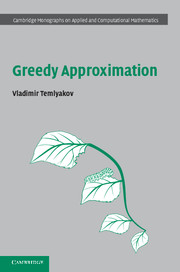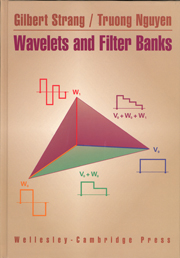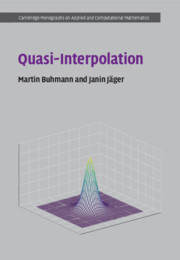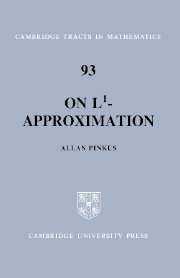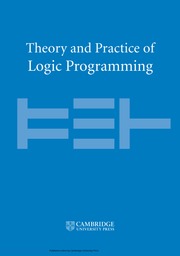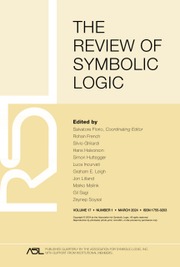Multivariate Approximation
Part of Cambridge Monographs on Applied and Computational Mathematics
- Author: V. Temlyakov, University of South Carolina
- Date Published: July 2018
- availability: Temporarily unavailable - available from TBC
- format: Hardback
- isbn: 9781108428750
Hardback
Other available formats:
eBook
Looking for an inspection copy?
This title is not currently available for inspection. However, if you are interested in the title for your course we can consider offering an inspection copy. To register your interest please contact [email protected] providing details of the course you are teaching.
-
This self-contained, systematic treatment of multivariate approximation begins with classical linear approximation, and moves on to contemporary nonlinear approximation. It covers substantial new developments in the linear approximation theory of classes with mixed smoothness, and shows how it is directly related to deep problems in other areas of mathematics. For example, numerical integration of these classes is closely related to discrepancy theory and to nonlinear approximation with respect to special redundant dictionaries, and estimates of the entropy numbers of classes with mixed smoothness are closely related to (in some cases equivalent to) the Small Ball Problem from probability theory. The useful background material included in the book makes it accessible to graduate students. Researchers will find that the many open problems in the theory outlined in the book provide helpful directions and guidance for their own research in this exciting and active area.
Read more- Introduces readers to the theoretical foundations of the subject, at a level suitable for teaching graduate courses
- Describes open questions in the area, providing ideas for further research
- Shows the links between the study of classes of mixed smoothness and other areas of mathematics, offering deeper insight into both
Reviews & endorsements
'This excellent book covers a variety of topics in univariate and multivariate approximation as well as their connection to computational mathematics … The exposition is designed in such a way that the reader is familiarized with the univariate results first and then the transition to the multivariate case is performed, highlighting the challenges and the new methods. The book is self-contained and is accessible to readers with graduate and advanced undergraduate background.' Andriy V. Prymak, MathSciNet
Customer reviews
Not yet reviewed
Be the first to review
Review was not posted due to profanity
×Product details
- Date Published: July 2018
- format: Hardback
- isbn: 9781108428750
- length: 550 pages
- dimensions: 253 x 178 x 34 mm
- weight: 1.12kg
- contains: 12 b/w illus.
- availability: Temporarily unavailable - available from TBC
Table of Contents
1. Approximation of univariate functions
2. Optimality and other properties of the trigonometric system
3. Approximation of functions from anisotropic Sobolev and Nikol'skii classes
4. Hyperbolic cross approximation
5. The widths of classes of functions with mixed smoothness
6. Numerical integration and approximate recovery
7. Entropy
8. Greedy approximation
9. Sparse approximation
Appendix. Classical inequalities
References
Index.
Sorry, this resource is locked
Please register or sign in to request access. If you are having problems accessing these resources please email [email protected]
Register Sign in» Proceed
You are now leaving the Cambridge University Press website. Your eBook purchase and download will be completed by our partner www.ebooks.com. Please see the permission section of the www.ebooks.com catalogue page for details of the print & copy limits on our eBooks.
Continue ×Are you sure you want to delete your account?
This cannot be undone.
Thank you for your feedback which will help us improve our service.
If you requested a response, we will make sure to get back to you shortly.
×

